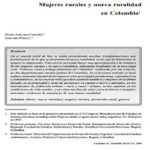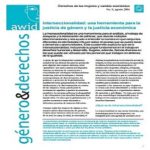Collective action and property rights for sustainable development
Institutions of collective action and systems of property rights shape how people use natural resources, and these patterns of use in turn affect the outcomes of people’s agricultural production systems. Together, mechanisms of collective action and property rights define the incentives people face for undertaking sustainable and productive management strategies, and they affect the level and distribution of benefits from natural resources.
Acción colectiva y derechos de propiedad para el desarrollo sostenible
Las instituciones de acción colectiva y los sistemas de derechos de propiedad moldean la forma en que la gente usa los recursos naturales.A su vez, estos patrones de uso afectan los resultados de los sistemas de producción agrícola de la gente. Juntos, los mecanismos de acción colectiva y los sistemas de derechos de propiedad definen los incentivos a los que la gente accede por llevar a cabo estrategias de gestión sostenible y productiva, y afectan el nivel y distribución de los beneficios de los recursos naturales.
Mujeres rurales y nueva ruralidad en Colombia
En el mundo rural de hoy se están presentando muchas transformaciones que forman parte de lo que se denomina la nueva ruralidad, en la cual la dimensión de género es importante. Este escrito pretende hacer una aproximación a la temática de las mujeres rurales y la nueva ruralidad, utilizando resultados de la investigación “Pobreza rural y trabajo femenino en Colombia” realizada, por las autoras, en dos departamentos rurales pobres de Colombia.
Interseccionalidad: una herramienta para la justicia de género y la justicia económica
La interseccionalidad es una herramienta para el análisis, el trabajo de abogacía y la elaboración de políticas, que aborda múltiples discriminaciones y nos ayuda a entender la manera en que conjuntos diferentes de identidades influyen sobre el acceso que se pueda tener a derechos y oportunidades. Este cuadernillo explica lo que es la interseccionalidad, incluyendo su papel fundamental en el trabajo en derechos humanos y desarrollo. Sugiere, además, formas diversas en las que puede ser utilizada por las personas que trabajan en defensa de la igualdad.
Rural Women’s Access to Land and Property in Selected Countries: Progress Towards Achieving the Aims of the Convention on the Elimination of All Forms of Discrimination against Women
This report is the fruit of collaboration between ILC, IFAD and FAO. It provides information on the historical background of the Convention and its Optional Protocol, the working methods of the Committee, as well as a summary of information provided in reports of selected countries. NOTE: See also the 2010 update of this document.
Gender and urban agriculture: the case of Accra, Ghana
Goats under household conditions
Goats account for about 30% of Africa’s ruminant livestock and produce about 17 and 12% of its meat and milk, respectively. Sub-Saharan Africa (SSA) accounts for over 60% of the total goat population in Africa, with an estimated 147 million goats representing about 80 indigenous breeds or strains distributed across all agro-ecological zones and ruminant livestock production systems. Goats are particularly important in marginal agricultural land areas, especially in arid and semi-arid areas, which together hold 64% of the goat population.
Land, Conflict and Livelihoods in the Great Lakes Region: Testing Policies to the Limit
Covers (1) Land as a source of conflict in Africa – the multi-dimensional nature of land issues; indirect causes of conflict, land access and structural poverty; interactions between customary and state-managed tenure systems; historical injustices and land disputes. (2) Land rights during conflict – population displacement; land as a sustaining factor in conflict; land rights of women, children and marginalized communities.
Report on FAO, UNIFEM and National AIDS Council Joint National Workshop on HIV and AIDS, Women’s Property Rights and Livelihoods in Zimbabwe
Report divided into 5 sections: inheritance and property rights; disability rights, HIV & AIDS, women’s property rights and livelihoods; survival strategies, nutrition, psychosocial support, economic empowerment, and self-reliance; self-reliance and economic empowerment for women in the context of HIV and AIDS; inspiring initiatives from the region (Zambia, Uganda, and Kenya). Contains a number of personal testimonies. Launched the famous T-shirt: ’property and a piece of land give women peace of mind’.









